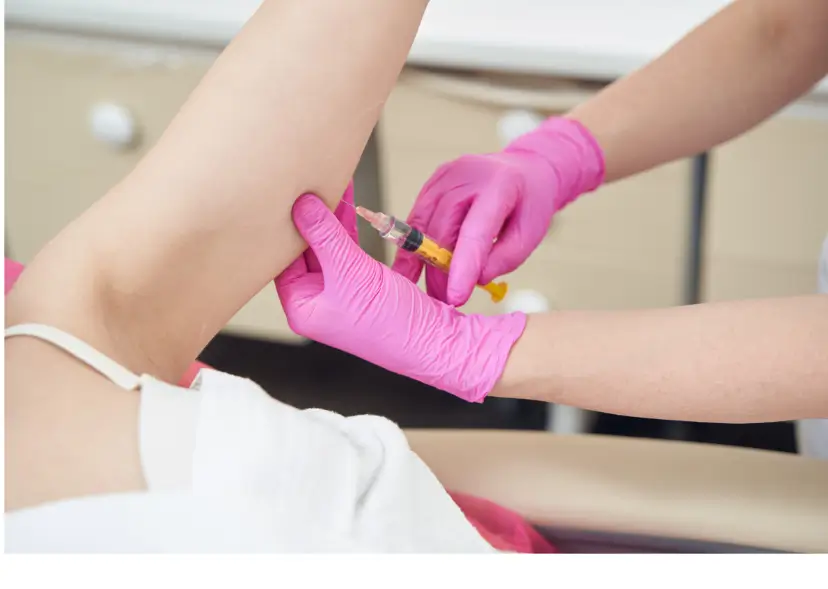In recent years, the number of middle-aged women seeking cosmetic procedures has been significant, with approximately 42.9% of all cosmetic enhancements performed annually on those aged 35-50. This demographic often pursues anti-aging and body contouring procedures, reflecting a growing trend toward maintaining a youthful appearance.
Dysport emerges as a popular choice. This injectable treatment is praised for its ability to reduce the appearance of wrinkles and fine lines. As women navigate the complexities of aging, Dysport offers a minimally invasive option to rejuvenate their facial aesthetics.
In this article, we will delve into the safety and considerations about using Dysport during breastfeeding to help patients make informed decisions about cosmetic procedures during this sensitive phase of life.
Key Takeaways
- When considering the use of Dysport in breastfeeding women, it is essential to weigh the potential risks and benefits, understand the pharmacokinetics of Dysport during lactation, and adhere to current recommendations and guidelines from regulatory authorities and professional societies.
- Patient counseling and obtaining informed consent are crucial aspects of managing Dysport treatments in breastfeeding women, and the timing of treatments should be carefully considered to minimize potential risks to both the mother and the infant.
About: Medical Spa RX provides medical practices with premium products at the best prices. If you’re looking to buy Dysport wholesale for your practice, the sales representatives at Medical Spa RX can give you guidance. We also have a rich knowledge base, including more articles about Dysport, including instructions on Dysport post care.
Safety Considerations for Dysport Use in Breastfeeding Women
Dysport, a popular muscle relaxant used in cosmetic procedures, poses certain risks and benefits for breastfeeding women. It’s critical to know that the safety of using Dysport while breastfeeding is not fully known.
The drug could lead to local weakness or unexpected side effects in some patients. Yet, the danger lies in not knowing if Dysport can pass into breast milk. This uncertainty makes it vital for doctors and patients to discuss the possible risks before proceeding with treatment.
Pharmacokinetics of Dysport During Lactation
Given this uncertainty, caution is paramount. Since it’s unclear whether Dysport can enter breast milk and potentially affect a nursing baby, consulting with a doctor becomes crucial before choosing this treatment while breastfeeding.
Current Recommendations and Guidelines

Regulatory authorities advise against Dysport during breastfeeding. They say it’s unsafe because there’s no research on its effects. The Drugs and Lactation Database (LactMed®) also points out a lack of data on Dysport use in women who breastfeed.
Recommendations from Professional Societies
Moving from what the regulatory bodies say, professional societies also have guidelines on Dysport use during breastfeeding. These groups look at all the research to help doctors make good choices.
They tell medical professionals that even though no data exist on Dysport during breastfeeding, being careful is critical because of what we know about similar treatments like Botox. It’s safe and doesn’t seem to move from mother to child.
Professional groups stress the need to avoid neuromodulators in moms who breastfeed or are pregnant. They also advise on how much Dysport to use for conditions like upper limb spasticity, usually no more than 1 mL per site.
Patient Counseling and Informed Consent

Talking openly about the potential risks with patients is critical. Doctors and healthcare workers need to share what could happen with Dysport during breastfeeding. It’s their job to tell patients about possible pain, redness, or even swelling.
Obtaining Informed Consent for Dysport Treatments while Breastfeeding
After talking about the importance of discussing potential risks with patients, it’s time to focus on how medical professionals can get informed consent for Dysport treatments during breastfeeding.
This step is critical. It ensures patients understand the treatment’s implications and potential risks. Doctors should always use precise language when explaining these things.
Getting a patient’s okay before starting treatment is more than just a formality—it’s about respect and safety. Medical teams must share all details about Dysport post-care, including any risks or side effects that could affect breastfeeding mothers or their babies.
They should also discuss other options available. This conversation helps them make an informed decision, keeping both mom and baby safe while addressing the mother’s needs and expectations from the treatment.
Timing of Dysport Treatments in Breastfeeding Women
In the process of minimizing risks, timing treatments right is critical for breastfeeding women thinking about Dysport. Most doctors say no to Botox when a woman is feeding her baby because there’s not enough info on how it affects the baby’s growth.
Since the effects of Dysport on breastfed babies are unclear, some suggest waiting 48 hours after treatment before breastfeeding again. This wait might reduce any chance of the drug reaching the baby through milk.
Guidance for Managing Concerns Related to Maternal and Infant Safety
Deciding the best time for Dysport treatments requires careful thought. The process bridges us to the vital step of ensuring safety for both mother and infant. Medical professionals must give clear advice on Dysport’s safety during breastfeeding.
Doctors should encourage mothers to wait with cosmetic procedures like Dysport until they finish breastfeeding. This move minimizes any risk to the baby. Sharing all known risks with patients helps them make informed choices about their health and beauty routines while nursing.
Practical Guidance for Medical Professionals

Professional societies offer guidelines based on solid evidence to help medical professionals use botulinum toxins safely. These guidelines suggest ways to give Dysport to breastfeeding women while keeping both mom and baby safe.
Doctors should know these recommendations well, as they guide how to treat breastfeeding patients with Dysport. Making informed choices is crucial for patient care. Following these guidelines helps ensure that treatments are effective and safe for mothers and their infants.
Considerations for Making Informed Decisions
Doctors should talk openly with moms about these concerns. They should explain why avoiding Dysport while breastfeeding might be wise due to potential unknown effects on the infant’s development and lactation issues. Ensuring a mother understands this can help her make an informed choice about her care.
Conclusion
The decision to use Dysport in breastfeeding women should be approached with careful consideration of the potential risks and benefits, adherence to current recommendations and guidelines, thorough patient counseling, obtaining informed consent, and thoughtful timing of treatments. By staying informed and prioritizing patient safety, medical professionals can effectively navigate the complexities of Dysport treatments in breastfeeding women.
FAQs
1. Can I use Dysport while breastfeeding?
It’s best to avoid Dysport when breastfeeding, as its safety during this time isn’t clear.
2. Is there any risk to my baby if I get Dysport while breastfeeding?
The effects on babies are unknown, so it’s safer to wait until breastfeeding is over.
3. What should I do if I need Dysport for medical reasons while breastfeeding?
Talk to your doctor about the risks and possible alternatives before deciding.
References
ISAPS INTERNATIONAL SURVEY on AESTHETIC/COSMETIC PROCEDURES Performed In 2021. https://www.isaps.org/media/vdpdanke/isaps-global-survey_2021.pdf
Pan, X., & Rowland Yeo, K. (2022). Addressing drug safety of maternal therapy during breastfeeding using physiologically-based pharmacokinetic modeling. CPT: pharmacometrics & systems pharmacology, 11(5), 535–539. https://doi.org/10.1002/psp4.12802
National Library of Medicine (US). (2006-). Drugs and Lactation Database (LactMed®) [Internet]. Bethesda (MD): National Institute of Child Health and Human Development. Botulin A. [Updated 2024 Feb 15]. Available from: https://www.ncbi.nlm.nih.gov/books/NBK501400/





















